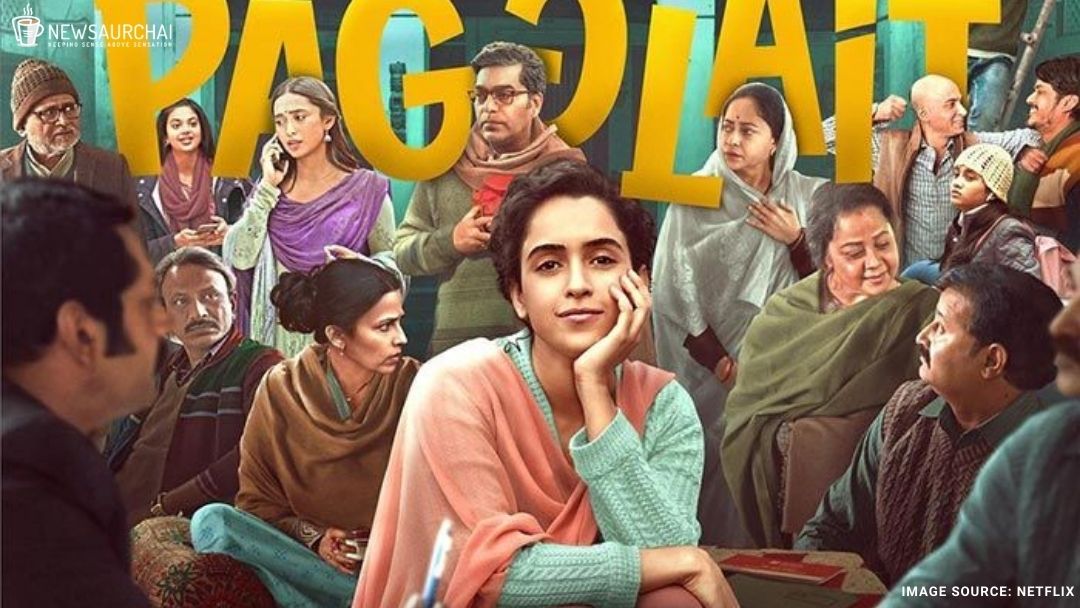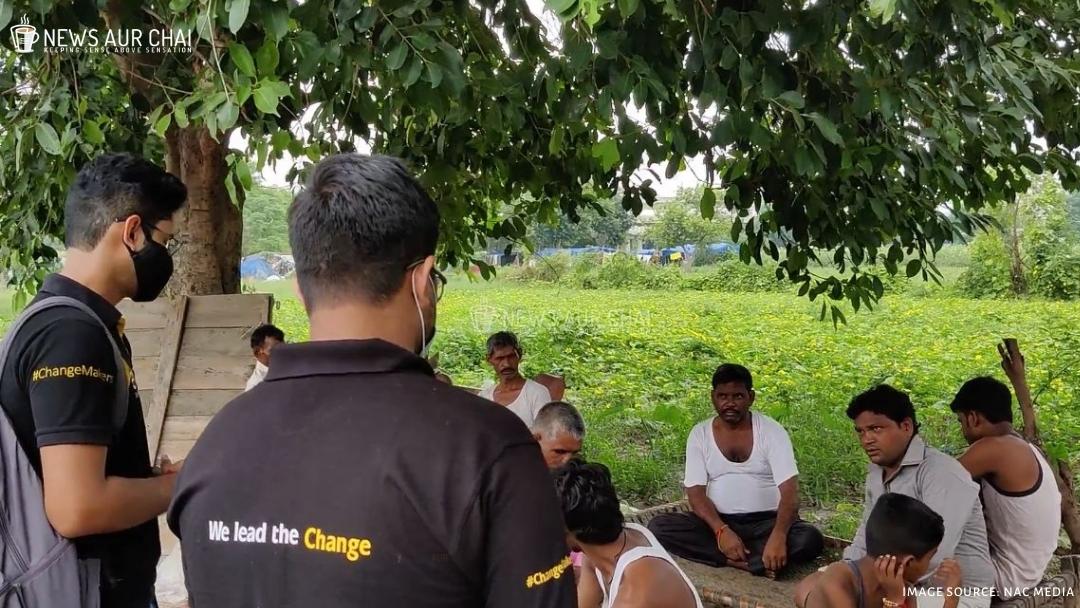Pagglait – Changing Perceptions Of Widowhood

Set in the backdrop of a funeral, Pagglait isn’t the pretty sombre film you’d expect it to be. The Netflix original is peppered with a grieving family’s idiosyncrasies that rarely make it to the silver screen.
Directed and scripted by Umesh Bist, Pagglait is a glimpse into the Giris lives as they mourn the untimely death of their eldest son, Astik. Bist juxtaposes the funereal atmosphere with a slice of life mundanity and absurdist humour from the very beginning of the film. From a child whining about his favourite toothpaste or the very inappropriate doorbell tune of “Ooh la la” of The Dirty Picture fame announcing other family members’ arrival, the Giri household is far from the typical grieving environment.
While everyone asks after the newly widowed wife Sandhya (Sanya Malhotra), the woman in question scrolls lazily through the Facebook comments about her husband. With just this one scene, the viewer is made to understand Sandhya’s mindset as she struggles to emote anything after her husband’s death. Instead of shedding tears, Sandhya seems almost indifferent as she declines an offer of tea for a Pepsi instead. The shock and disbelief are palpable on her parents’ and mother-in-law’s faces at this bizarre request. Her mother even asks her if she’s okay, fuelling the perception that if a woman doesn’t visibly mourn her husband’s death, there must be something wrong with her.
Though the banker uncle (Jameel Khan) claims it could be Post Traumatic Stress Disorder (PTSD), it’s quickly made clear that Sandhya didn’t have enough of an attachment to her deceased spouse. Widowed just five months after getting married, Sandhya played the role of a dutiful housewife in a loveless marriage. Throughout the film, Sandhya drops little nuggets that point to how unsatisfied she was in that house. Her detachment is evident in her restlessness as she yearns to break free of being cooped indoors for the thirteen days of the wake. Sandhya even lies to fulfil her whim of eating golgappas with her friend, Nazia (Shruti Sharma). This is followed by one of the most striking scenes in the film where Astik’s brother’s hand performing the mourning rituals is brilliantly intercut with Sandhya’s reaching for the golgappa.
Her agitation is brought on by a shocking discovery of a woman’s photo preserved safely in Astik’s files. Her husband’s idea could have been unfaithful comes out of the left field for Sandhya, and she struggles to process this new information. After grappling with conflicting emotions, Sandhya’s dilemma of seeking out the mystery woman is resolved when the latter visits the Giris to offer her condolences.
The introduction of this new character, Akanksha (Sayani Gupta), unravels Sandhya and Astik’s marriage’s true nature. In a predictable move, the script writes in Sandhya’s outburst at ‘the other woman’, pinning the blame of their failed marriage on Akanksha. Sandhya’s resentment stemmed from the fact that Astik could never love her because he was still hung up on his college sweetheart. But what Pagglait does differently is that it goes beyond this rivalry. Sandhya has a reverence for the independent life Akanksha built for herself. Through their numerous interactions, Sandhya begins to embody the confidence that Akanksha carries herself with and dreams of such a life for herself.
Apart from Sandhya’s journey of self-discovery, Pagglait dabbles in a multitude of social commentaries. The most obvious one is the undertones of patriarchal domination that run through the family. The insistence that they are very “open-minded” is undercut with this statement from the men in the family who try to decide Sandhya’s second marriage on her behalf, making light of the hypocrisy. When Sandhya is named Astik’s sole beneficiary of Rs. Fifty lakhs in his life insurance policy, the cunning elders, do everything in their power to wrest that money from her. They even go so far as to propose a marriage with Astik’s cousin to “keep the money within the family”.
Though the financial scarcity looms over Astik’s parents’ heads, Ashutosh Rana (Shivendra Giri) and Sheeba Chaddha (Usha Giri) execute grieving parents’ parts perfection. Where everyone else has their eyes on the prize, Shivendra is appalled at the idea that his son’s death was being reduced to such cheap power politics. The faceless Astik’s parents aren’t allowed to process their grief in isolation from real life’s cruelties that spare none. Neither are they spared from the routine gossiping and bad-mouthing of nosy relatives who seem to pay no heed to the less-than-ideal circumstances.
The film also highlights the family’s very pointedly alienating treatment of Sandhya’s Muslim friend, Nazia. From the get-go, an elderly uncle makes his disdain clear by the sneer in his voice as he spells out her name. Separate dinnerware and cups and being made to eat meals outside are just a few instances of how Nazia is clearly deemed ‘other’.
Pagglait is definitely head and shoulders above a Bollywood film made for the masses, clearly targeted at a more niche audience. The film is undoubtedly carried by the ensemble cast’s strong performances, particularly by Sanya Malhotra and Sayani Gupta. The film does well to set itself apart from the crowd by not losing itself in melodrama. However, Sandhya’s character arc of becoming independent outside of her family’s shadows falls slightly short of the expectations the film title evokes, ultimately making it underwhelming. Several plot points were touched upon without being delved into, which begs why they were introduced in the first place. While the premise sounded promising, the film faltered slightly in its delivery. Pagglait lacks a tighter script and an ending that packs a strong punch, making it a slightly forgettable watch.





